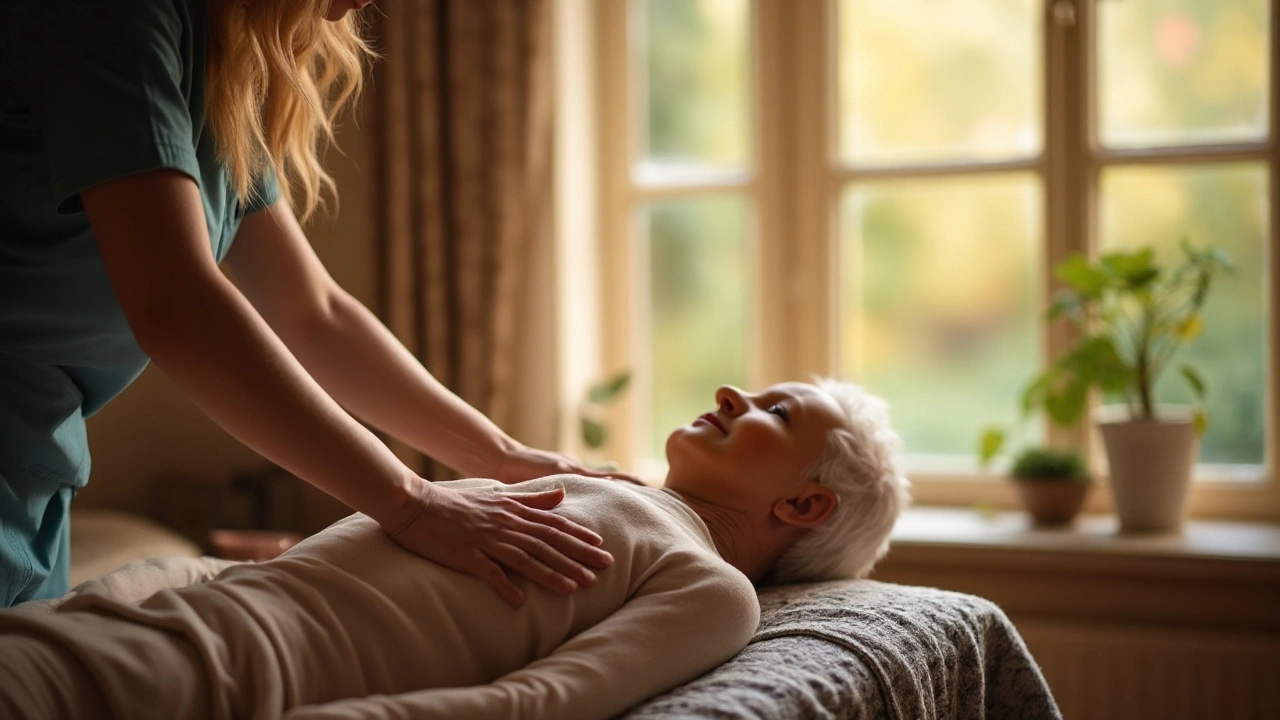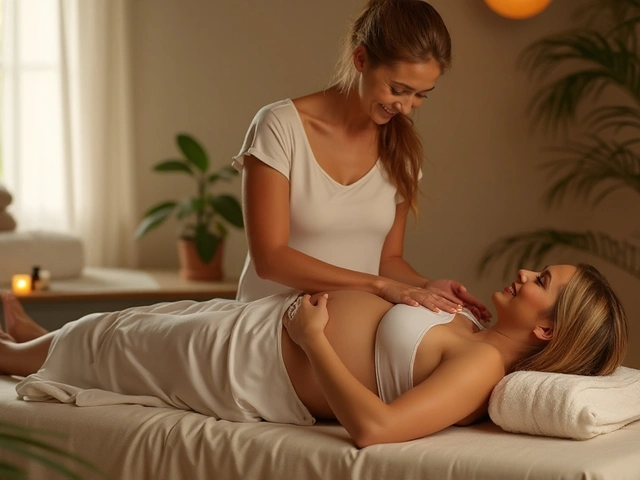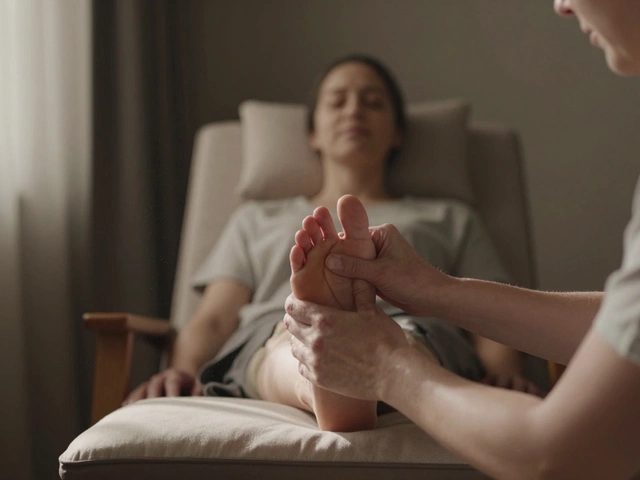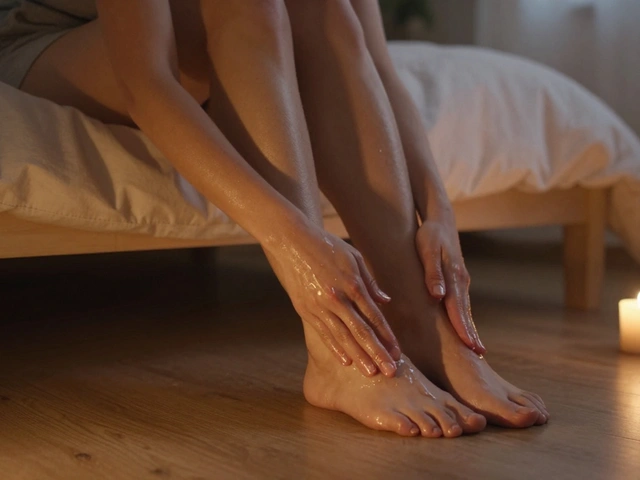Palliative massage is becoming a cornerstone of holistic health practices, particularly in its ability to support patients with serious or life-limiting illnesses. It’s not just about physical relief; this gentle form of therapy opens doors to emotional and spiritual ease as well. By addressing both body and mind, palliative massage can be a game-changer in patient care.
Through tailored techniques, therapists aim to reduce pain, soothe anxiety, and improve overall quality of life. For those suffering from ailments that often accompany chronic conditions, a session can provide a moment of peace and comfort. But how exactly does this work, and what should one expect?
We’ll delve into what makes palliative massage unique in the world of healthcare. From its benefits to the skills required to perform it, this article will give you an inside look at why it's gaining popularity and how it can be applied in various settings.
- Understanding Palliative Massage
- Benefits for Patients
- Techniques and Approaches
- Practical Tips for Caregivers
Understanding Palliative Massage
Palliative massage is a unique therapeutic approach specifically tailored for those in the various stages of life-threatening or terminal conditions. It is designed to offer both physical comforts via gentle touch techniques and emotional solace by fostering a sense of serene presence. Unlike traditional massage, which might focus on invigorating the muscles or addressing bodily tensions, palliative massage places its core emphasis on individualized care and symptom management unique to each patient's condition. Therapists trained in this field prioritize creating a peaceful environment where all the senses are engaged harmonically to uplift the spirit and calm the mind.
This form of massage delves deeply into the holistic perspective, seeing the patient not just as a body in need of physical relief but a person with an intricate blend of emotions, fears, and hopes. It embraces the concept that alleviating pain and distress can significantly boost the patient's quality of life and that of their families. Techniques used involve a combination of gentle stroking, light pressure, and sometimes even the gentle application of soothing aromatherapy oils meant to heighten the sensory experience and provide comfort.
The efficacy of palliative massage has been recognized in various settings, including hospices and hospitals, where it often plays a supplementary role to medical treatments. According to a statement from the National Hospice and Palliative Care Organization, "Massage therapy can be transformative, turning the simple act of touch into a powerful tool to enhance the healing environment for those nearing the end of life." This perspective embraces not only the physiological benefits but also the human connection formed through touch, which can be immensely comforting during times of vulnerability.
Recent studies illustrate compelling results, showcasing its ability to reduce levels of anxiety, improve sleep patterns, and even lessen the perception of pain in many patients. These findings, presented in numerous healthcare journals, underline the growing acceptance of palliative massage as a mainstream therapeutic option. Massage therapists often work closely with other healthcare providers to ensure the safety and well-being of their patients, adapting each session to suit the immediate needs and comfort levels of the client, which reflects the personalized nature of this practice.
The growing awareness and demand for palliative care options like massage reflect a broader shift toward more empathetic and human-centered healthcare solutions. As we gain a more profound understanding of the intricate web of interactions between physical health and emotional wellbeing, treatments that acknowledge and address these complexities become invaluable parts of comprehensive care. Whether it be through alleviating physical discomfort or providing a compassionate ear, palliative massage holds the promise of making a significant difference in the lives of its recipients.
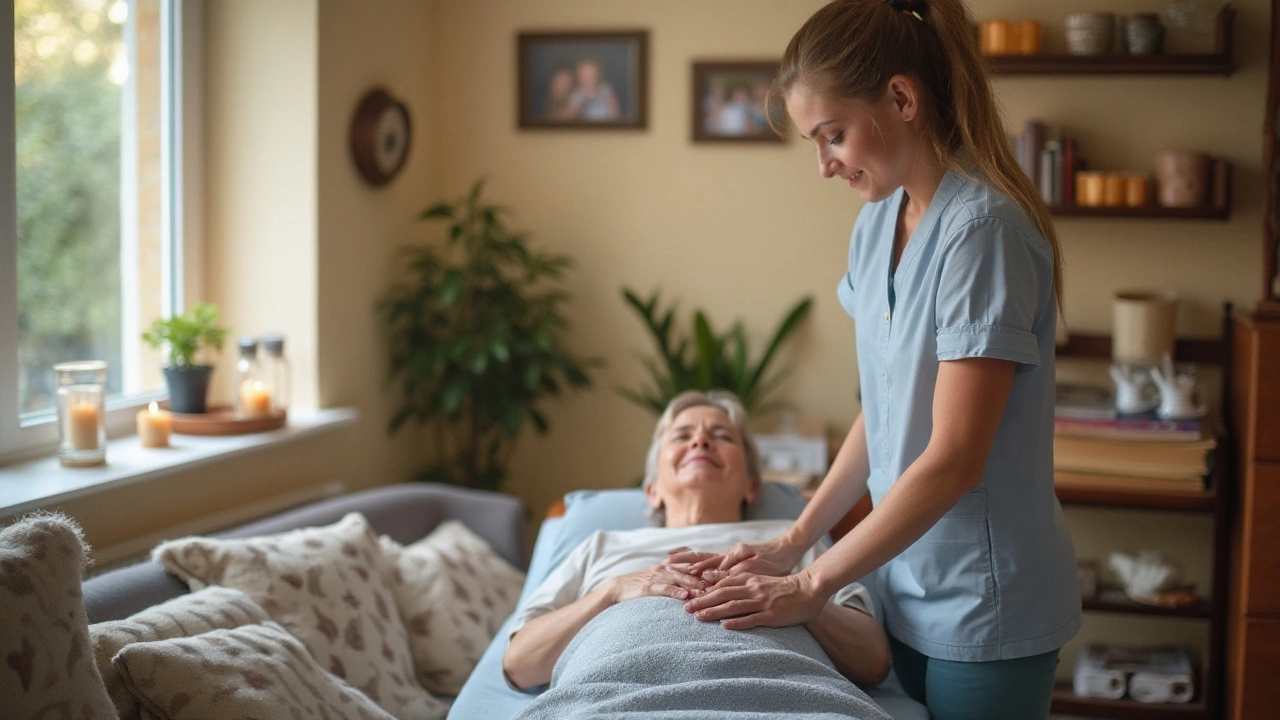
Benefits for Patients
Palliative massage offers profound benefits for patients navigating the often challenging journey of serious illness. This specialized type of massage therapy tailors each session to fit the unique needs of individuals, ensuring that the experience is both soothing and therapeutic. At its core, palliative massage aims to bring comfort, and it succeeds with gentle techniques that are mindful of the patient's condition, focusing on the areas that require attention while being cautious of any limitations. One of the most significant victories of this therapy is pain relief. Chronic pain often accompanies serious illnesses, and palliative massage provides a non-invasive way to ease such discomfort, making it an attractive option for those who might not tolerate or wish to avoid medications.
Beyond the physical relief, palliative massage addresses the emotional health of patients. It’s no secret that stress and anxiety can exacerbate symptoms, and this type of massage works quietly but efficiently to reduce such stresses. When patients feel cared for and relaxed, their quality of life improves, and they often report better sleep patterns, enhanced mood, and even a renewed sense of hope. This is crucial because when faced with a serious health challenge, a patient's mental state can be as pivotal in the healing process as any treatment. This is where the true beauty of palliative massage lies—it recognizes the patient as a whole being, not just a disease to be managed.
According to the National Institutes of Health, "Integrating massage therapy within a palliative care framework enhances patient comfort, uniquely addressing both psychological and physiological needs."
There is evidence to suggest that palliative massage can influence physiological processes positively. Studies indicate reductions in heart rate and blood pressure following massage sessions, signifying an overall calming effect on the body. These physiological changes can be beneficial for the heart, especially when prolonged stress poses a risk. Additionally, the release of endorphins—a natural painkiller produced by the body during massages—can work wonders in tackling chronic pain. Patients have described feeling a wave of relaxation after their sessions, noting that the effects often last longer than the massage itself, which is valuable for those dealing with relentless pain.
Let us not overlook the social benefits—human touch is therapeutic and often missed in the hospital settings where clinical detachment is predominant. Studies have shown that patients who receive regular palliative massage reported a stronger connection to their caregivers, helping to reduce the feelings of isolation. This connection is vital because it nurtures a trusting environment where the patient feels safe, heard, and understood. The ripple effect of feeling supported transcends into a patient's willingness to engage more actively with their treatment plans and contributes to a better overall outlook.

Techniques and Approaches
The world of palliative massage is both delicate and profound, offering a gentle touch that can transform the lives of those living with serious illnesses. This type of therapy is about more than just relieving physical discomfort; it’s a holistic approach that encompasses emotional and psychological support as well. One well-known technique is Effleurage, which involves light, sweeping strokes aimed at calming the body and reducing stress. This method is often used at the beginning of a session to help the patient feel comfortable and relaxed. Such techniques require a deep understanding of the individual’s needs, which makes the role of a palliative massage therapist so vital and unique.
Understanding the specific needs of each patient is crucial in palliative care. Techniques like Petrissage, characterized by kneading motions, are beneficial in improving circulation and alleviating muscular tension without causing any strain. This approach is particularly useful for patients who may be bedridden or have limited mobility, as it provides gentle stimulation that promotes well-being. Therapists might also incorporate light pressure to stimulate acupuncture points, a practice drawn from traditional Chinese medicine that has been shown to ease pain and support the body’s natural healing processes. It's about fostering an environment where patients feel cared for and valued.
Often, the environment in which these massages take place is just as important as the massage itself. Creating a relaxing atmosphere with soft lighting and soothing music can significantly enhance the beneficial effects of the massage. A therapist might use aromatherapy, infusing the air with calming scents like lavender or chamomile, which can help in reducing anxiety and promoting a serene state of mind. The idea is to engage all the senses to create a holistic experience. This approach not only helps manage physical symptoms but also addresses emotional and spiritual needs, which are essential components of holistic health.
Choosing the right oils and balms is another critical aspect of palliative massage. Each oil has unique properties that can enhance the massage experience. For instance, coconut oil is known for its moisturizing properties, making it an excellent choice for dry or sensitive skin. On the other hand, using warming oils like ginger can help in comforting aching muscles and joints. The selection often depends on the specific conditions and preferences of the patient, tailoring each session to offer maximum benefits. This personalization is what makes palliative massage a powerful tool in the arsenal of holistic health care providers.
"Massage therapy plays a significant role in supportive care, providing relief in both physical and emotional spheres," says the American Massage Therapy Association. Patients often report feeling less anxious and in less pain after a session, highlighting its value in comprehensive care.
To maximize the effectiveness of a palliative massage, ongoing communication between the therapist and the patient is key. Discussing the therapy session's objectives, level of comfort, and any specific areas of concern ensures that the treatment is as effective as possible. Frequent check-ins allow therapists to adjust their techniques in real-time, ensuring patient satisfaction and comfort. Through this collaborative process, patients are empowered to take an active role in their care, fostering an atmosphere of trust and mutual respect. This communication ensures that holistic health needs are met, providing a therapeutic experience that truly supports whole-person healing.

Practical Tips for Caregivers
Caring for someone with a serious illness can be both rewarding and overwhelming. Integrating massage therapy into your caregiving routine can provide tremendous support, not just for the person you're looking after, but for you as well. It’s essential for caregivers to understand that the touch provided through palliative care is not just therapeutic for the body, but also deeply comforting for the spirit. Learning how to administer basic massage techniques safely can make a world of difference. Even if you're not a trained therapist, simple actions can help ease pain and offer relief.
If you're new to this, start by establishing a quiet, serene environment. It’s crucial to create a sense of peace where the person feels relaxed and safe. Soft lighting, calming music, and comfortable temperatures can all contribute to an ideal setting. Before beginning, always communicate openly with the person in your care to ensure they’re comfortable and willing to participate in this form of relaxation. Understanding their pain tolerance and areas where they feel discomfort is key to avoiding causing any unintended pain. Respecting their comfort level should always be your priority.
Focus on gentle, circular motions, especially around tense areas such as shoulders and back. Remember, the objective is not muscular manipulation as in sports massage, but rather achieving soothing comfort. Using massage oils or lotions can enhance the experience by reducing friction and allowing your hands to glide more smoothly over the skin. Adding a few drops of preferred essential oils can also create a calming aroma. Keep in mind the person's likes and dislikes, as scents can trigger memories and emotions, either pleasantly or otherwise.
As a caregiver, it’s also important to recognize your limitations and know when to seek professional help. There are times when involving a trained massage therapist might be more beneficial, especially if the person's condition is complex. Many trained professionals specialize in palliative care and can offer treatments that are both safe and specifically tailored to individual needs. According to the American Massage Therapy Association, studies have shown that massage can reduce cortisol levels—the stress hormone—by up to 31%, providing a profound improvement in quality of life.
Encourage open dialogue about each session. Ask open-ended questions about how the experience felt and what could improve. Tailoring each session based on feedback can help fine-tune the process, making each encounter more effective and personal. Remember, your intentions are rooted in care and compassion, and every attempt to provide comfort is meaningful. An insightful quote from Clayton Christensen, a noted expert on health care innovation, encapsulates this perfectly: "The ability to care about and connect with another person is what makes us truly human, and it's the same element that should be at the core of health care." With these practical steps, you can empower yourself to make a significant positive impact, leveraging the holistic power of touch within your caregiving routine.

